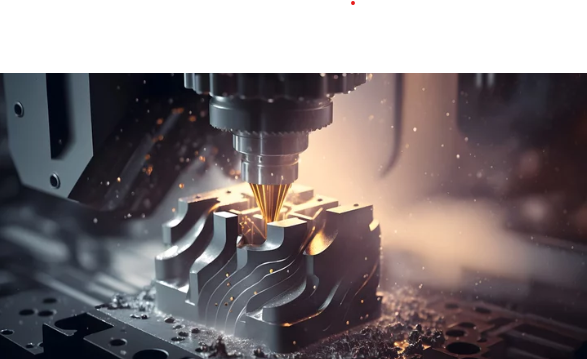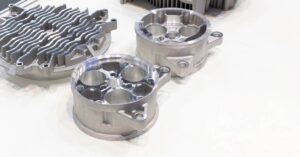Die casting stands as a testament to the ingenuity of the manufacturing sector, a process combining science, technology, and artistry to fabricate complex metal parts.
Employed across a myriad of industries, die casting offers an enticing blend of versatility, precision, and high-volume efficiency that few other processes can match.
The Die Casting Process: A Symphony of Elements
At its core, die casting is a method of forceful injection of molten metal into a specially crafted mold or ‘die,’ an elaborate stage set for the metal to solidify and adopt the intricacies of the mold’s design.
The die casting process primarily accommodates softer alloys, such as aluminum and zinc, due to their relatively low melting points, making them ideal for precision moldings.
Die casting bears a strong resemblance to injection molding, sharing the fundamental requirement of a mold tool. However, where the injection molding process primarily caters to plastics, die casting is a dance of molten metals. The die can host a single cavity or multiple cavities, an element that greatly enhances the scalability and efficiency of this process.
A Journey into Low- and High-Pressure Casting
The die casting process bifurcates into two distinctive paths – low-pressure and high-pressure casting – with the choice hinging on the intricacy of the parts and the volume of production.
Low-pressure die casting
Low-pressure die casting involves pouring molten metal into the die through a riser tube under relatively low pressure. This approach yields high-quality components and is ideal for producing complex geometries with low porosity, but its production rate is comparatively slow.
High-pressure die casting
High-pressure die casting, on the other hand, utilizes a ladle or plunger mechanism to forcibly inject the molten metal into the die. The result is a lightning-fast cycle time, facilitating the production of a large volume of intricate parts in a fraction of the time.
The Role of Modern Die Casting Techniques
In our relentless pursuit of innovation, advanced die casting methods like squeeze casting and semi-solid metal casting have emerged.
Squeeze casting marries the best attributes of casting and forging processes, providing a means to produce high-integrity, near-net-shape parts with superior mechanical properties.
Semi-solid metal casting, meanwhile, utilizes a unique thixotropic property of alloys to yield parts with exceptional dimensional accuracy and surface finish.
The Die Casting Industry: A Matter of Specialization
Due to the idiosyncrasies of different metals and alloys, many die casting companies lean into specialization.
While aluminum accounts for around 80% of die cast parts due to its light weight, corrosion resistance, and excellent thermal and electrical conductivity, there’s a burgeoning interest in zinc die casting for its superb dimensional stability and high impact strength.
Conclusion: The Art of Die Casting
In essence, the die casting process embodies a remarkable blend of speed, precision, and repeatability, fostering the mass production of complex metal parts. Through ongoing advancements and a deep-seated commitment to quality, die casting continues to push the boundaries of what’s possible in metal part manufacturing.
Here, we pride ourselves on our human touch. Every die casting project is meticulously reviewed and quoted by our project managers and experts. This hands-on approach ensures that our solutions are tailored to your unique requirements, guaranteeing a seamless manufacturing experience that meets and exceeds your expectations. Join us on this journey and unlock the incredible potential of die casting today.






